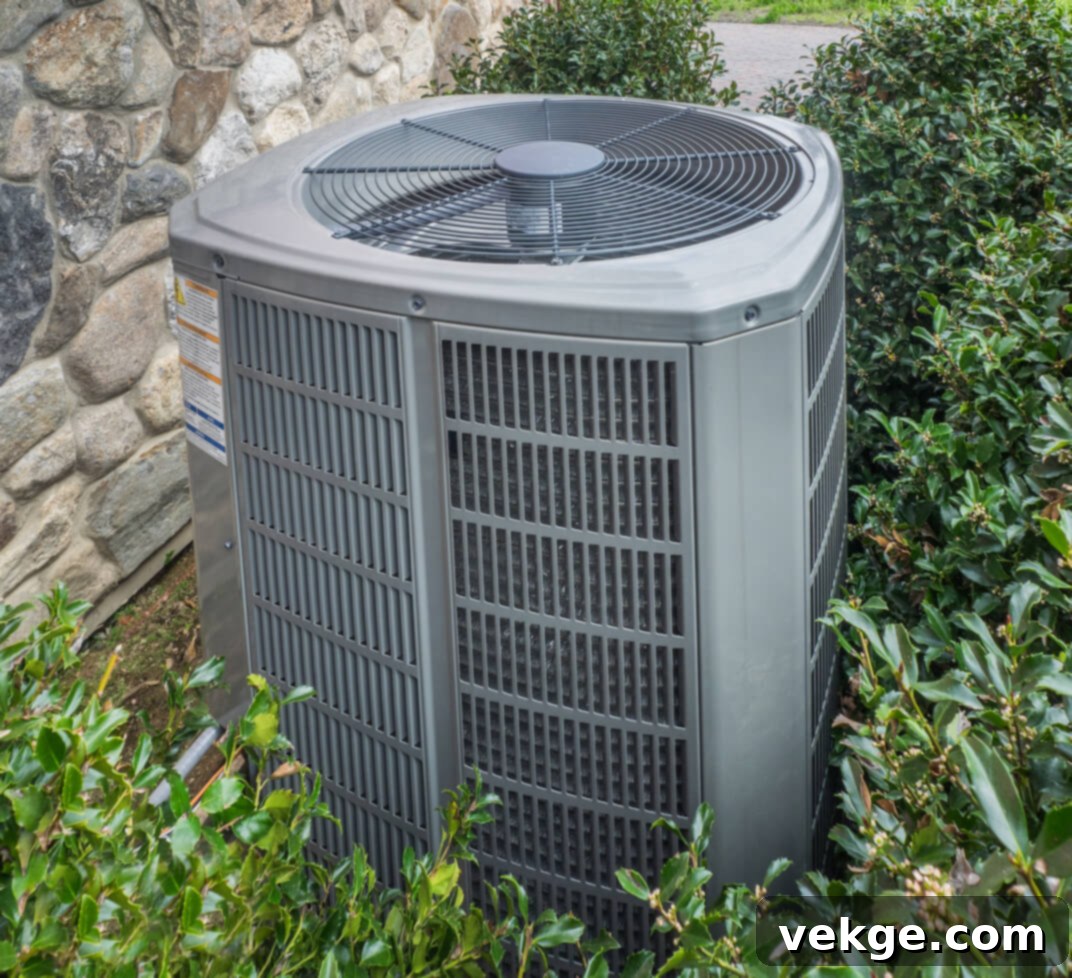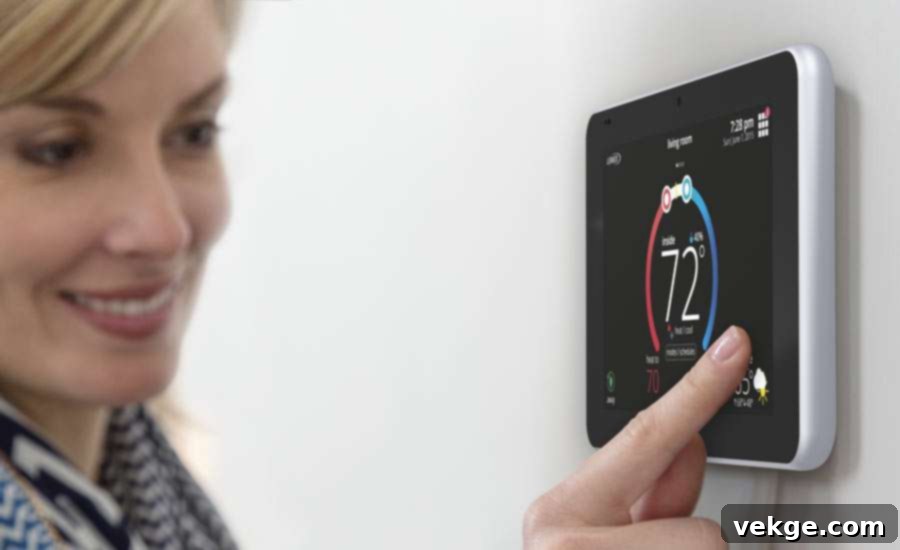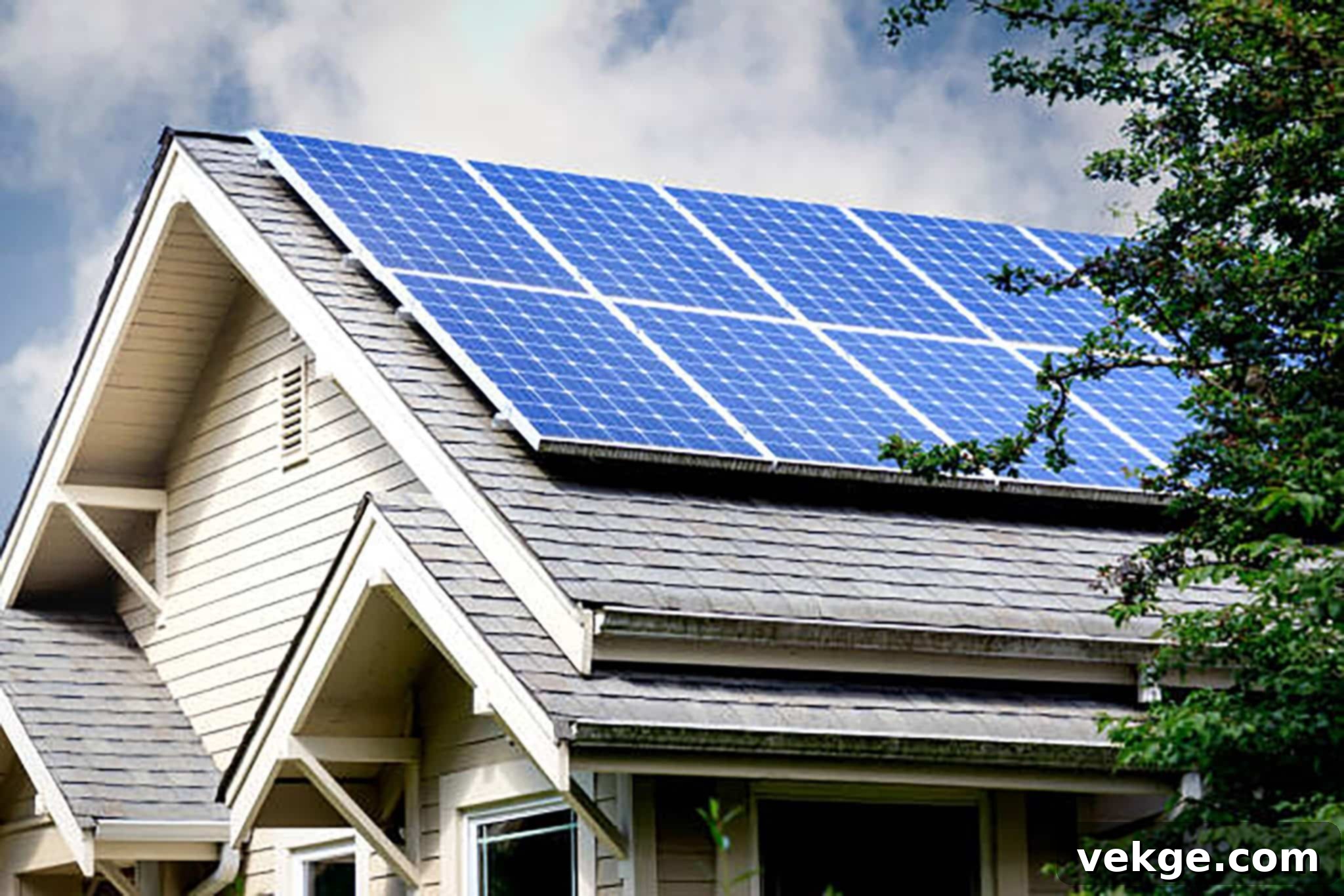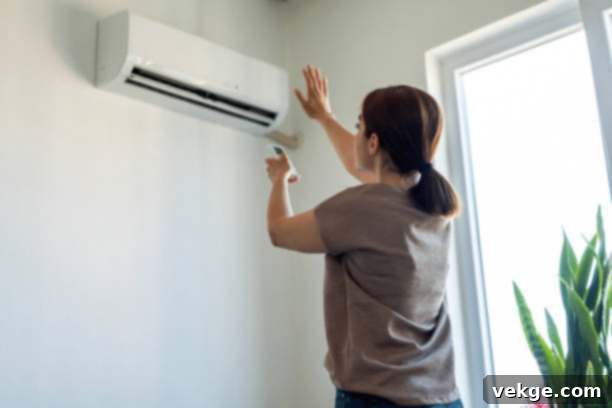Maximize Savings & Comfort: Your Ultimate Guide to Energy-Efficient Heating and Cooling Systems
Imagine a home that feels perfectly comfortable all year round, where warmth embraces you in winter and cool breezes refresh you in summer, all while your energy bills significantly plummet. Does this sound like a dream? It doesn’t have to be. By making intelligent, strategic tweaks to your home’s heating and cooling systems, you can achieve substantial savings and enhance your living environment. This comprehensive guide will equip you with practical, actionable tips to maintain a cozy home in winter and a cool sanctuary in summer, all without straining your budget or compromising on comfort.
You don’t need to be a certified HVAC expert to implement these changes. Simple yet effective steps, such as establishing a routine maintenance schedule, upgrading to programmable or smart thermostats, and ensuring proper insulation, can dramatically reduce energy waste throughout your home. Even seemingly minor actions, like regularly changing air filters and diligently sealing air leaks, play a crucial role in maximizing the efficiency of your systems and unlocking significant long-term savings.
There’s a remarkable difference between a heating and cooling system that merely “runs” and one that is truly “optimized.” This article will delve into how these small, thoughtful adjustments can lead to colossal savings, effectively transforming your home into a beacon of energy efficiency. Prepare to discover the secrets to achieving peak performance from your HVAC setup, ensuring every dollar spent on energy delivers maximum comfort and value.
Understanding and Optimizing Your Heating and Cooling Systems

To effectively save energy and maintain a comfortable home, a fundamental understanding of your heating and cooling systems is essential. This section will break down their core components, highlight the critical role of regular maintenance, and teach you how to identify common inefficiencies that might be costing you money.
Key Components and Their Functions
Your heating and cooling infrastructure comprises several vital components, each performing a specific function to regulate your indoor climate. The central control unit is the **thermostat**, which acts as the brain, sensing the temperature and communicating with the system to initiate heating or cooling cycles as needed. For heating, **furnaces** (burning fuel) and **heat pumps** (transferring heat) are the primary movers, converting energy into warmth circulated throughout your living spaces. If you’re considering efficient heating solutions, you might want to explore options from resources like Heat Pump Advisor.
Conversely, **air conditioners** and combined **HVAC units** cool the air by circulating refrigerants that absorb heat from your home. The **ductwork** then serves as the circulatory system, distributing this conditioned air – whether warm or cool – to every room. Essential for air movement are **filters**, which trap dust and allergens, and **blowers**, which propel the air through the ducts. A basic grasp of how these components work together will empower you to troubleshoot minor issues, perform routine maintenance, and ultimately ensure your systems operate at peak efficiency.
The Critical Role of Regular Maintenance
Maintenance isn’t just a recommendation; it’s absolutely critical for ensuring the optimal performance, longevity, and efficiency of your heating and cooling systems. Neglecting maintenance can lead to unexpected breakdowns, reduced comfort, and significantly higher energy bills. Scheduling **seasonal inspections** – ideally in spring for cooling and fall for heating – can prevent minor issues from escalating into costly repairs and extend the lifespan of your equipment.
Simple, DIY tasks like **replacing air filters** every one to three months (depending on usage, pets, and allergies) are paramount. Clean filters ensure proper airflow, prevent strain on your system, and improve indoor air quality. Similarly, routinely **inspecting and cleaning ductwork** can prevent obstructions and seal leaks, drastically reducing energy waste caused by conditioned air escaping into unused spaces. While some tasks are homeowner-friendly, **professional service** is invaluable. Technicians will perform comprehensive checks, including verifying refrigerant levels, calibrating thermostat settings, inspecting electrical connections, and cleaning coils. Investing in small, consistent maintenance efforts translates directly into big savings on energy bills, enhanced system reliability, and a more comfortable home environment.
Identifying and Addressing Common Inefficiencies
Many inefficiencies in heating and cooling systems are surprisingly easy to identify and rectify, offering immediate improvements in energy use. One of the biggest culprits is **leaky ductwork**. Gaps and cracks in your ducts can allow a significant percentage (sometimes up to 30%) of your heated or cooled air to escape into attics, crawl spaces, or wall cavities, essentially paying to condition areas you don’t use. Addressing these leaks with mastic sealant or metallic tape can yield substantial savings.
**Insufficient insulation** is another major energy drain. If your home lacks adequate insulation in walls, attics, and floors, conditioned air will rapidly escape in winter, and heat will infiltrate in summer. Ensuring your home is properly insulated is fundamental to retaining conditioned air and minimizing your system’s workload. **Old or malfunctioning thermostats** can lead to constant temperature fluctuations or unnecessary system operation, wasting energy. Upgrading to a modern, programmable, or smart thermostat offers precise control and energy-saving features. Finally, **obstructed vents** (blocked by furniture or curtains) and **dirty filters** force your system to work harder to push air, consuming more energy without delivering adequate comfort. Regular checks to ensure vents are clear and filters are clean are simple steps that significantly improve performance and save energy.
Optimizing Your System Settings for Peak Efficiency

Beyond maintenance, how you operate your heating and cooling systems plays a monumental role in their energy efficiency and your monthly bills. By paying close attention to your thermostat settings, considering a zoning system for larger homes, and adapting your habits to seasonal changes, you can unlock further savings and enjoy consistent comfort.
Essential Thermostat Tips for Energy Savings
Your thermostat is your primary interface with your home’s climate control, and setting it correctly can make a profound difference in your energy consumption. A widely recommended starting point for energy savings is to set your thermostat to **78°F (25.5°C) in summer** when you are home and to **68°F (20°C) in winter**. Adjusting these temperatures by just a few degrees can have a noticeable impact on your energy usage.
The single most impactful upgrade for many homes is installing a **programmable thermostat** or, even better, a smart thermostat. These devices allow you to pre-program temperature schedules based on your daily routine, letting your system automatically reduce operation when you’re asleep or away from home. This “set it and forget it” approach ensures you’re only conditioning your home when necessary, leading to significant money and energy savings.
It’s crucial to **avoid frequently changing your thermostat settings** throughout the day. Constantly bumping the temperature up or down forces your system to work harder, engaging in “short cycling” which uses more energy to reach and maintain a desired temperature. Find your comfortable settings and allow the system to operate efficiently within those parameters. Small, consistent adjustments over time are more effective than frequent drastic changes.
Embracing Zoning Systems for Customized Comfort
**Zoning systems** offer an advanced level of climate control, allowing you to regulate the temperature in different areas or “zones” of your home independently. This is an incredibly valuable feature for larger homes, multi-story residences, or houses with areas that are used at different times or have varying heating/cooling needs.
With a zoning system, you can effectively segment your home and install a dedicated thermostat for each zone. For instance, you could keep your main living areas cooler during the day when they are occupied, while maintaining a warmer temperature in bedrooms only during sleeping hours. This prevents the wasteful conditioning of unoccupied spaces. While frequently asked questions about zoning systems often concern the initial installation cost and setup time, the long-term benefits in terms of significant energy savings, enhanced comfort, and personalized climate control make it a worthwhile investment for many homeowners.
Seasonal Adjustments for Optimal Efficiency
Adapting your heating and cooling habits to align with the changing seasons is a straightforward yet powerful way to boost energy efficiency. In **summer**, utilize natural cooling strategies: employ ceiling fans (running counter-clockwise) to create a wind-chill effect, and keep blinds, shades, or curtains closed during the hottest parts of the day to block solar heat gain, reducing the workload on your AC unit.
As **winter** approaches, reverse the direction of your ceiling fans (clockwise at a low speed) to push warm air trapped near the ceiling back down into the living space. During daylight hours, open curtains and blinds on south-facing windows to allow natural sunlight to warm your home passively. Before the start of each season, it’s highly recommended to perform a thorough check and maintenance of your HVAC system. This includes cleaning or replacing filters, checking for air leaks around windows and doors, and inspecting ductwork to ensure everything is running smoothly and efficiently for the season ahead.
Advanced Energy Saving Techniques and Home Upgrades
For those looking to elevate their energy efficiency to the next level, incorporating smart home devices and considering strategic system upgrades can yield even greater savings and unparalleled comfort.
Smart Home Integrations for Intelligent Climate Control
The advent of smart home technology has revolutionized energy management. **Smart thermostats** are at the forefront of this innovation, allowing you to control your home’s temperature remotely via smartphone apps. This means you can adjust settings while away, ensuring you only use energy precisely when needed. Many smart thermostats also possess “learning capabilities,” observing your daily routines and preferred temperatures over time, then automatically adjusting heating and cooling schedules to maximize savings without you lifting a finger.
Another powerful tool in the smart home arsenal is **smart vents**. These devices regulate airflow in individual rooms, allowing you to direct conditioned air only to occupied spaces and restrict it from empty ones. By dynamically heating or cooling only the areas in use, smart vents can significantly reduce unnecessary energy consumption. Furthermore, integrating **motion sensors and occupancy detectors** can further optimize system operations by adjusting heating and cooling based on actual activity within different areas of the home, ensuring no energy is wasted on empty rooms.
Strategic Add-Ons and System Upgrades
Investing in higher-efficiency HVAC equipment is a significant step towards long-term energy savings. **Upgrading to high-efficiency HVAC systems** means selecting models with higher SEER (Seasonal Energy Efficiency Ratio) ratings for air conditioners and heat pumps, or higher AFUE (Annual Fuel Utilization Efficiency) ratings for furnaces. These higher ratings indicate that the units use less energy to produce the same amount of cooling or heating, translating to substantial savings over their lifespan.
Beyond the main unit, consider insulating exposed ductwork, especially in unconditioned spaces like attics or crawl spaces, to prevent energy loss and improve overall system efficiency. As mentioned, **zoning systems** are a fantastic upgrade, providing granular control over different areas of your home, thus eliminating wasted energy in unoccupied zones. Other effective additions include installing **reflective window films** to reduce solar heat gain in summer and minimize heat loss in winter, and performing a professional **energy audit** to identify specific areas of energy waste in your home and prioritize cost-effective improvements.
Boost Your Home’s Energy Efficiency with Renewable Energy Solutions

For the ultimate impact on your heating and cooling energy consumption and overall environmental footprint, integrating renewable energy solutions is a game-changer. These advanced systems not only benefit the planet by reducing reliance on fossil fuels but also offer remarkable long-term financial advantages for homeowners.
Harnessing the Sun: Solar Panels and Heating
**Solar panels** offer a powerful way to reduce your dependence on the traditional energy grid by capturing and converting the sun’s abundant power. Solar energy can directly power a wide array of home appliances, including your heating systems. For instance, **solar water heaters** specifically use solar thermal panels to heat your domestic water supply, significantly reducing the need for conventional electric or gas water heaters. This direct application of solar energy can drastically cut down on a major household energy expense.
Geothermal Heating and Cooling: Earth’s Constant Power
**Geothermal systems** represent one of the most efficient and sustainable heating and cooling technologies available. These systems leverage the earth’s consistent underground temperature – which remains stable year-round, typically between 45-75°F (7-24°C) depending on latitude – to exchange heat with your home. By tapping into this natural, renewable resource, geothermal systems provide highly efficient and sustainable climate control, keeping your home comfortable in all seasons. While they typically involve a higher upfront installation cost compared to conventional HVAC systems, the long-term savings on energy bills and their extended lifespan often make them a superior and more efficient investment.
Wind Turbines: Capitalizing on Natural Airflow
For homeowners residing in areas with consistent wind patterns, **small wind turbines** can be an excellent supplementary addition to a comprehensive renewable energy strategy. Wind energy can perfectly complement solar energy, especially during seasons or times of day when sunlight is less available. By integrating wind turbines, you can ensure a more steady and diverse supply of renewable energy to power your heating, cooling, and other household systems, enhancing your energy independence.
Incentives and Rebates for Renewable Energy
The initial investment in renewable energy systems can be substantial, but many governments at federal, state, and local levels, along with local utility companies, offer a variety of **incentives and rebates**. These programs are designed to encourage the adoption of clean energy technologies and can significantly help offset the upfront cost of installation, making solar, geothermal, and wind solutions more financially accessible and attractive to homeowners.
Combined Heat and Power (CHP) Systems
**Combined Heat and Power (CHP) systems**, also known as cogeneration, offer a highly efficient approach by simultaneously producing both electricity and useful thermal energy (heat) from a single fuel source. By capturing and utilizing heat that would otherwise be wasted in conventional electricity generation, CHP systems can meet a home’s electricity and heating needs with remarkable efficiency, often exceeding 80% total energy utilization. This integrated approach minimizes energy waste and maximizes the value derived from the fuel source.
Summary: Achieving Sustainable Comfort and Savings
Achieving maximum energy savings with your home’s heating and cooling systems is not just an aspiration; it’s a practical and attainable goal. By dedicating time to understand how your systems function, committing to regular maintenance, and diligently optimizing your settings, you can significantly reduce your energy consumption and enjoy substantially lower utility bills.
Further boosting your home’s efficiency can be accomplished through advanced techniques such as integrating smart home technologies like smart thermostats and vents, and investing in energy-saving upgrades like high-efficiency HVAC units and improved insulation. Even seemingly small changes, such as utilizing a programmable thermostat or ensuring adequate home insulation, can collectively make a monumental impact on your overall energy footprint.
By implementing these strategies, you’re not only ensuring a consistently comfortable home environment throughout every season but also actively contributing to a more sustainable future and realizing considerable long-term energy cost savings. Remember, an optimized system isn’t merely operating; it’s performing at its absolute best, ensuring that you derive the maximum value and comfort from every single energy dollar spent.
